By Isis Nusair
Introduction
This post is based on extensive ethnographic research conducted between 2007-2011 with Iraqi women refugees in Jordan and with representatives of the United Nations and national and international aid organizations. The majority of the women I interviewed arrived in Jordan after the 2003 United States-led invasion of Iraq, with most arriving between 2005-2006. The women’s age ranged from 18 to 72 and I deliberately chose to interview women who came from different parts of Iraq, and who had different economic, educational, ethnic, political and religious backgrounds. My research is informed by feminist participatory research methodology and educational theory. I am very aware of the need for relational/reflective approaches and historicization of the women’s context. Throughout my work, I privilege an ethnographic approach in which the voices of the women frame my conceptual understanding and analysis of their situation. Rather than apply theoretical frameworks to their narratives and in this way hem in and constrain the meaning I might derive, I instead reflect on the multiple layers of meaning in what the women reveal. I then consider what theoretical insights can help deepen my understanding of their discourses and shifting, lived experiences.
Fixed Temporality
The politics of being a refugee has as much to do with the cultural expectation of certain qualities and behaviors that are demonstrative of “authentic” refugeeness (e.g., silence, passivity, victimhood) as it does with legal definitions of regulations (Nyers, 2006: xv). I refrain from using the term “guests” to describe Iraqi refugees in Jordan. “Guests” is the official term used in Jordan to connote hospitality and the temporary nature of the Iraqi refugees’ presence in the country. Many refugees referred directly to this contradiction and explained the lack of rights associated with the term “guests” and the fact that many of them have been “guests” in Jordan for a number of years (see Chatelard). The majority described their presence in Jordan as temporary and explained that the main reason behind their leaving Iraq was to seek safety and protect their children from violence.
Hana, a widow in her fifties, described the situation as up in the air, “we do not know our destiny. The Jordanian government might ask us to leave at any moment…There is no rest for a guest. It is heavy, if we were to work, the situation could have been better…I am responsible for the house and the kids. The responsibility of a daughter and a disabled child is on me.” An artist couple in their forties said, “There is no guarantee for us and for our children here…We are like prisoners, like the torn album thrown in the wind…We are not refugees because we do not have rights as refugees…We are dispersed and not refugees.” Suad, a woman in her early sixties whose house was broken into and who was kidnapped in Iraq in 2006 added, “There is no stability. Our living in Amman is temporary as they might ask us to leave at any moment. If it were not for my kids, I would not be here.” She concluded by saying that the situation in her country will take a long time to resolve and that her extended family is dispersed in the Arab Gulf states and in Europe.
This sense of no return was reiterated by the majority of the women I interviewed. Sameera, born in 1958, has been in Jordan since 2007. She came to Jordan with her children following the assassination of her husband in 2007. Sameera is not registered with the United Nations. She described how she does not have any ambition to go back to Iraq, and that not much is left of this life. She concluded by saying, “We have seen a lot.” Nadia, an Iraqi painter in her early seventies, described how people were afraid to say a word under the Ba’th regime, and how she does not interact much with the Jordanian society. “Nothing is left…Our group [family] is dispersed. This is our situation, some are in Qatar, New Zealand, and Sweden…When they [the Americans] occupied us, they did not bring a democratic life and the situation became worse. Now we miss the Saddam days…Many families do not have money to go back and visit their homes. This is a long-term stay for us for where could we go?” Nadia, as did many women interviewed, was steadfast and emphasized that life continues despite the cruelty of the situation. “We are still better than others…I do not have hope that Iraq will return. At times, my husband and I say, ‘What have they done to us?’ We have lost a lot.”
Contesting Terminology
Nyers argues that “the refugees’ relationship to the political can be described as a kind of ‘inclusive exclusion.’ Refugees are included in the discourse of ‘normality’ and ‘order’ only by virtue of their exclusion from the normal identities and ordered spaces of the sovereign state (xiii).” Sama, an Iraqi performance artist in her early fifties started the interview by saying, “I do not like the word refuge. I prefer shelter…There is no security and if it was not for my son, I would not have left…I do not like to philosophize. Before we were able to dream and work to achieve our dreams. Today we only have one dream and we are even afraid to dream it.” She described how in the last five years she has been unable to perform despite the proposals she receives. “I feel that I cannot reflect what the country [Iraq] is going through.” This sense of paralysis was echoed by many women refugees who were traumatized by what they went through before their arrival in Jordan (see Dahl, 2005). They expressed the limits on their space and the contradictions they live through, especially that they came to Jordan seeking security and found instability instead. This instability is a product of the temporality of their presence in the country as they have to constantly pay fees to renew their visas and avoid deportation.
Sana, a woman in her late twenties said, “We sacrificed everything for security…The main thing is to feel stable and to be respected as human beings. If there is work, no one is incapable.” Rabiha, a journalist in her late fifties, described this contradiction between visibility and invisibility when talking about her job. She publishes daily and weekly articles in a major Jordanian newspaper and her articles are translated regularly into different languages. Although she is a well-known journalist in the region, she was granted residency in Jordan through her son’s work permit and not through her credentials as a journalist. She says, “The person that does not have a country does not have protection. Iraqis are not treated well because no one protects them and defends their rights. This was also the case during the sanctions regime…There is no security and the poor suffer the most. If the situation remains as is, we will all be poor.”
Sana, age twenty-five, has been living in Jordan since 1994. She elaborated on the contradiction in her life of being an Iraqi refugee in Jordan by saying, “we are breaking the law, there are no permits for work and no stability…You feel like a stranger…it is important that the situation becomes stable, and salaries need to increase. There needs to be security, and you need to be strong, otherwise you could be exploited.” Sana acknowledged throughout the interview that her family’s situation in Jordan will not improve and that it is better that they return to Iraq. Yet, she emphasized that as long as the situation does not improve in Iraq then they will be afraid to go back. She concluded by saying, “we live in exile, and there is no stability or security…there is no stability from the inside. We always feel that there is something missing…You speak two languages, Iraqi inside the house and Jordanian outside. The psychology of it all is hard and the way people treat you is hard as well. The situation is normal now as a result of what we went through. We laugh despite the circumstances.”
The Limits of the Research Process
The humanitarian discourse around refugees is dominated by a problem-solving mentality that defines refugee movement as a technical problem in need of rapid solutions. Humanitarian solutions to the phenomenon of the refugee enact a spatial reversal of the binary citizen-refugee to transform the refugee’s lack into a positive presence (Nyers, 2006). These solutions take the form of restoring statist identities and communities to refugees (settlement in a third country or repatriation). Since these options are mostly unavailable for Iraqi refugees in Jordan, what is needed are perspectives that are open to the possibility of political and ethical engagements that do not reproduce the sovereign codes that doom refugees to the status of “speechless emissaries” (14).
In a context where many refugee women are in dire need of aid, it was imperative for me to emphasize that the research I was carrying out will help expose the issues but not necessarily resolve the problems. This challenge exposed the limits of the research process itself in affecting meaningful change in the life of the refugees (see Bloch et al., 2000). The women were well aware of this limitation. Suha said, “Iraqis are tired and need solutions and not surveys and application forms. We need tangible things.” Many women emphasized that despite these limitations they had a need to make their stories heard. Hajdukowski-Ahmed et al. (2008) argue that through voice and voicing, agency and power are reclaimed by marginalized groups. Yet Olujc (as quoted in Hajdukowski-Ahmed) reminds us that we may give voice to the victims of violence but we can never restore their lives (19). Many of the aid workers I interviewed emphasized how difficult it was to provide psychological aid to Iraqi refugees who have other stressing material needs.
I was constantly reminded as I conducted the interviews of the need to be attentive to the complexity embedded in the women’s narratives and their coping mechanisms. The majority of the women did not elaborate or provide graphic details of what they went through before leaving Iraq. They positioned their experiences as part of a larger collective, and made clear connections between the hardships they had to endure while living under the Ba’th regime and sanctions, and in the aftermath of the U.S. led invasion in 2003 (See Ismael & Ismael, 2000; Al-Ali, 2007; Al-Jawaheri 2008; Al-Ali & Pratt, 2009). Zeina, a medical doctor who was kidnapped and severely harassed for five days in 2004, said that she came to Jordan to overcome the shock that she went through. “I need security to go back. We are thankful to Jordan but the prospect of return worsens by the day…There was a loss of security, and everything collapsed.”
References to trauma as well as paralyses were particularly present in the narratives of younger women as they were still navigating a personal and professional path for themselves. Nadine, a woman in her early twenties who studied Computer Science in Iraq said, “My life passes me by, stops, like a machine that has not been used for a long time. I need to get out of this paralysis that I am in…Sometimes I see my future as black, that my life will end here with no chance to advance, and that the situation will become worse…[we are] like refugees with no past, present or future. All this could be overcome as long as I have my family with me and I feel settled and comfortable where I live. Work [in Jordan] is a waste of time, and you cannot advance.” Nadine described how she was followed by a car with militia men while in Iraq and how she had to flee with her mother to Amman as her father and brother remained behind. She emphasized throughout the interview that if her country were to return to the way it was, she would immediately go back. For her, the Iraq she knew and grew up in, is no longer there. Nadine described how she has been unable to work or develop in her field and that work conditions for Iraqi refugees in Jordan are exploitative. This was echoed by Hanan and Zeina, two sisters who fled to Jordan with their dad and other sister as their mother and brothers remained behind. They fled because of threats made against the older sister, Hanan, who worked as a translator with the Americans. Zeina, a school teacher by training, described how depressed she feels and how she gained weight as she stays mostly at home cooking and watching TV. She described her two-year experience of working in a factory in Amman as exploitative with no opportunity for advancement. “They would not pay for work permits or health insurance. There is no stability, no stability. I feel like an intruder, I am not for this place and nothing in it connects me to it…We as Iraqis hope that they will give us asylum and a place to settle. There is no security, neither here nor there. Everything is hanging.” Hanan, on the other hand, described her inability to politically organize for Iraqi refugee rights in Jordan and how the Moukhabarat (Jordanian Intelligence Agency) called her for questioning about her activities.
Suha, a divorced woman in her late thirties with three children (one of them is disabled) described how she felt alienated and denied identity. “There are lots of people without families. They do not have self-confidence and they have no confidence in others…Iraqis are tormented…I am alone and my burden is heavy…I need a home where I could settle down…The hope is to leave. That is how we could get our rights and feel secure. We are supposed to be refugees but not here. Here is temporary…Despite the Saddam regime, Iraq was our country…the situation today is barbaric…We got used to exile and difficulties, yet change might help make things better.” She concluded the interview by saying, “maybe it will be better in a foreign country…Things will not improve in Iraq even after ten years…It is hard to see the country fall apart in front of your eyes. This is what hurts. I live in constant worry yet I am optimistic and won’t despair…My hope is to gain independence and immigrate.” Suha’s persistence in sustaining her presence as a woman and as an Iraqi is illustrated in her wish, “I want to be able to say in the future that this is my home, I do not want people to control me.”
Nyers (2006) argues that refugee situations should be understood as complex and multidimensional sites of identity. Within this context a crisis situation is a contested social construction involving a variety of competing political, cultural and identity practices. He warns against emptying all notions of political agency from refugee subjectivity, especially that the prevailing attitude in conventional analyses of refugee movements is one that provides no place for refugees to articulate their experiences and struggles or to assert their (often collectively conceived) political agency. The open-ended nature of the interviews where the focus was on the causes that prompted the women to leave Iraq and the transition and challenges they currently face as Iraqi women refugees in Jordan, opened a space for the women to reflect on their experiences and construct a narrative that analyzed their situation and visions for the future. Hardgrove (2009) argues that as families work to balance demands with capabilities, they are constantly in the process of interpreting their circumstances by assigning meanings to themselves and their context (484). Relating to the refugee experience as a politicized process of contestation and becoming emphasizes the connection and continuum between their life before and after their arrival in Jordan.
The majority of Iraqi women interviewed described the militarization of their lives and the continuities between the past and present, their current status in Jordan and their living through the Iran-Iraq war (1980-88), the Gulf War (1990) and life under the sanctions regime (1990-2003). Sama vividly recalled living under the Ba’th regime. She said, “terror was implanted even among the members of the same family…When I remember it now, I feel the bitterness more than when we lived it. We live in exile, we flee from the unknown.” She spoke about the impact of the Iran-Iraq war, “it was then that things started to deteriorate. We lived as if suffocated and pretended to be living…I used to walk by the wall [to protect herself from the Ba’th regime] and if my death would have made a difference I would have sacrificed myself.” Suha recalled how under the sanctions regime, they were unable to achieve anything. “You were unable to develop; only sleep and eat.” These were the same words that many women refugees used to describe their situation in Jordan. Suha added, “the war [with Iran] started when we were children. We grew up with war and bombing, and something died inside. We lived from one war to another; we were barely living.”
Conclusion
I conducted the research with a firm political engagement to analyze the gendered nature of Iraqi refugee experience in Jordan. This engagement raised questions about where research ends and intervention begins. Recognizing my location, complicity and distance, identification and personal involvement were constant reminders of power differentials and the need to pay attention to issues of subjectivity and accountability. My activist background and academic training in feminist analysis push me to link theory with practice and think of research as a space for social change. The invisibility of the consequences of the United States-led invasion of Iraq in 2003, particularly its impact on population displacement, raises questions about the impact of the war on the day to day lives of Iraqis in general and refugees in particular.
My analysis focuses on how Iraqi women refugees constructed meanings and practices to deal with the challenges they face on a daily basis as women refugees in Jordan. I wonder about the consequences of the transient nature of displacement and the impact on the physical and mental health of Iraqi women refugees. Could women refugees (especially those from the lower classes) rely on aid for decades to come, and what is the impact of this prolonged state of displacement on social networks and communal support systems? Women refugees from East Amman and Zarqa relied on social networks to exchange information about aid agencies and the variety of resources available that could help in addressing the health and educational needs of their children. For the majority of women from the lower and upper classes, being around Iraqi refugees sustained a sense of community and a feeling of home, even if a limited one.
The longer refugees remain in exile, the more difficult and complicated it may be to return (see Bloch et al., 2000). Since the prospects of local integration or return for Iraqi refugees are not foreseeable in the near future, most of the Iraqi women I spoke with were interested in repatriation into a third country. Since viable options were almost entirely outside the realm of the control of refugee women, they were still resilient and constantly searching for ways to improve their situation. Yet, can they sustain this situation for the short and long term, and could they continue to live for years to come in this third space that grants them no chance to seek asylum, return to Iraq, or settle in Jordan?
Bibliography
Al-Ali, Nadje. Iraqi Women: Untold Stories from 1948 to the Present. London: Zed Books (2007).
Al-Ali Nadje and Nicola Pratt. What Kind of Liberation? Women and the Occupation of Iraq. Berkeley: University of California Press (2009).
Al-Jawaheri, Yasmin Husein. Women in Iraq: The Gender Impact of International Sanctions. London: I.B. Tauris (2008);
Bloch, Berry et al. “Refugee Women in Europe: Some Aspects of the Legal and Policy Dimensions.” International Migration, 38(2) (2000). 20-40.
Chatelard, Géraldine. “The Politics of Population Movements in Contemporary Iraq: A Research Agenda.” In Writing the History of Iraq: Historiographical and Political Challenges. R. Bocco, J. Tejet and P. Sluglett (eds.) London: World Scientific Publishers/Imperial College Press (2011). 359-378.
Dahl, Solveig et al. “Traumatic Effects and Predictive Factors for Posttraumatic Symptoms in Displaced Bosnian Women in a War Zone.” Journal of Traumatic Stress, 11(1) (2005). 137-145.
Hajdukowski-Ahmed, Maroussia et al. Not Born a Refugee Woman: Contesting Identities, Rethinking Practices. Oxford: Berghahn Books (2008).
Hardgrove, Abby. “Liberian Refugee Families in Ghana: The Implications of Family Demands and Capabilities for Return to Liberia.” Journal of Refugee Studies. 22(4) (2009). 484-501.
Ismael, Jacqueline, and Shereen Ismael. “Gender and State in Iraq.” In Gender and Citizenship in the Middle East. Joseph Suad (ed.). New York: Syracuse University Press (2000). 185-211.
Nyers, Peter. Rethinking Refugees: Beyond States of Emergency. New York: Routledge (2006).
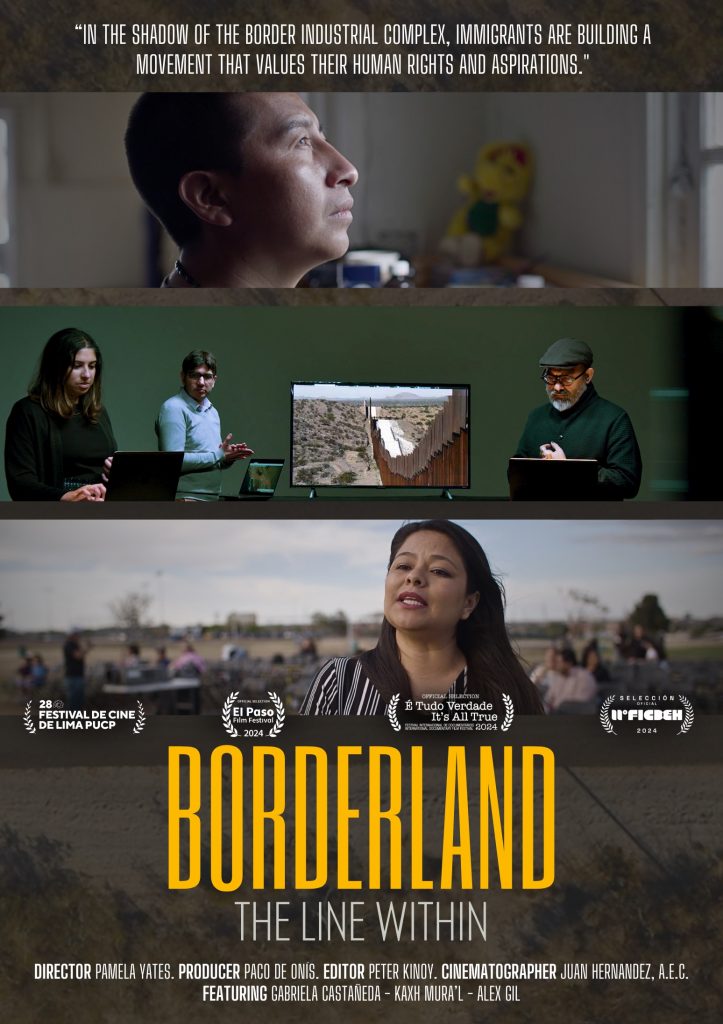


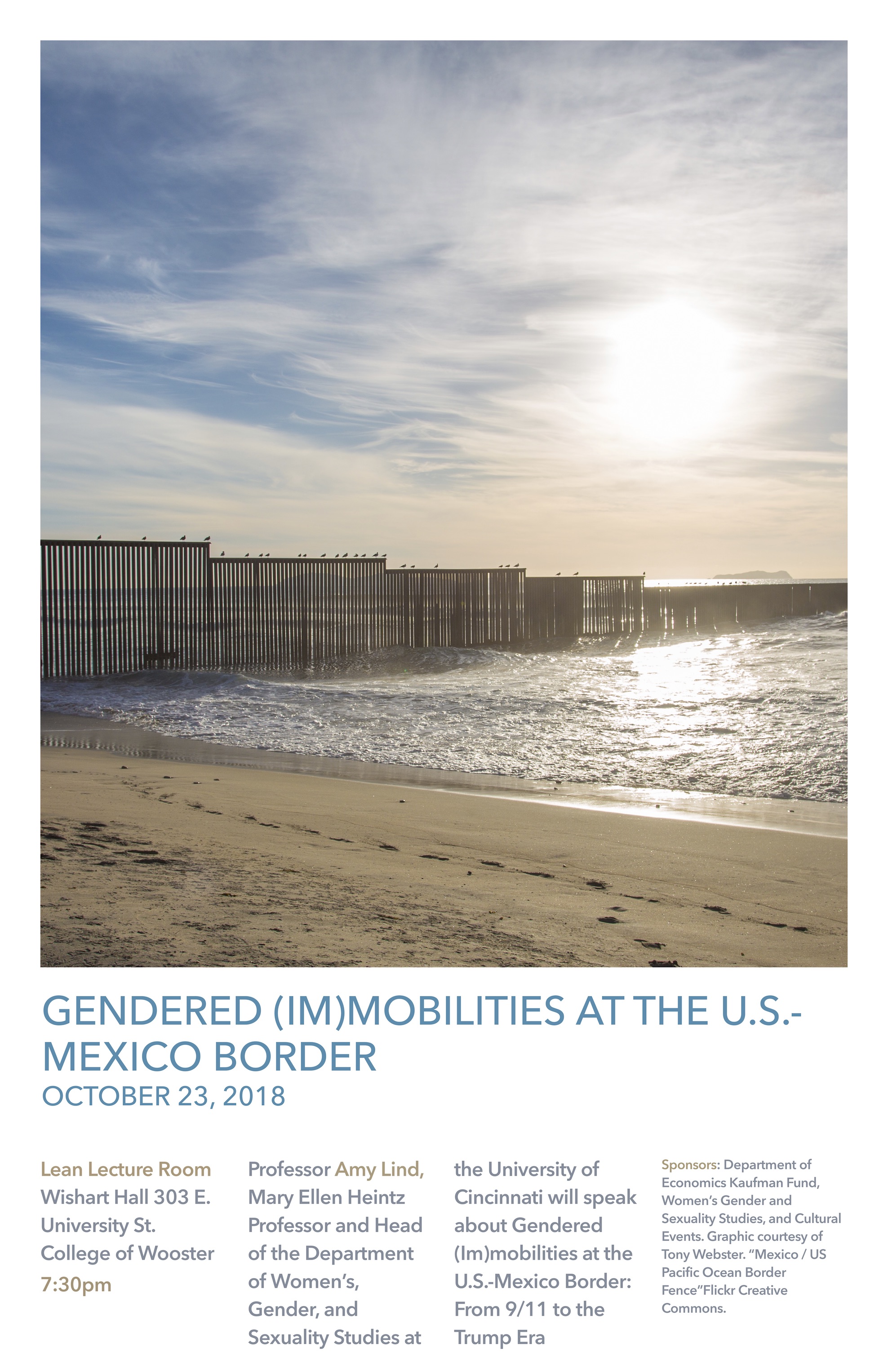
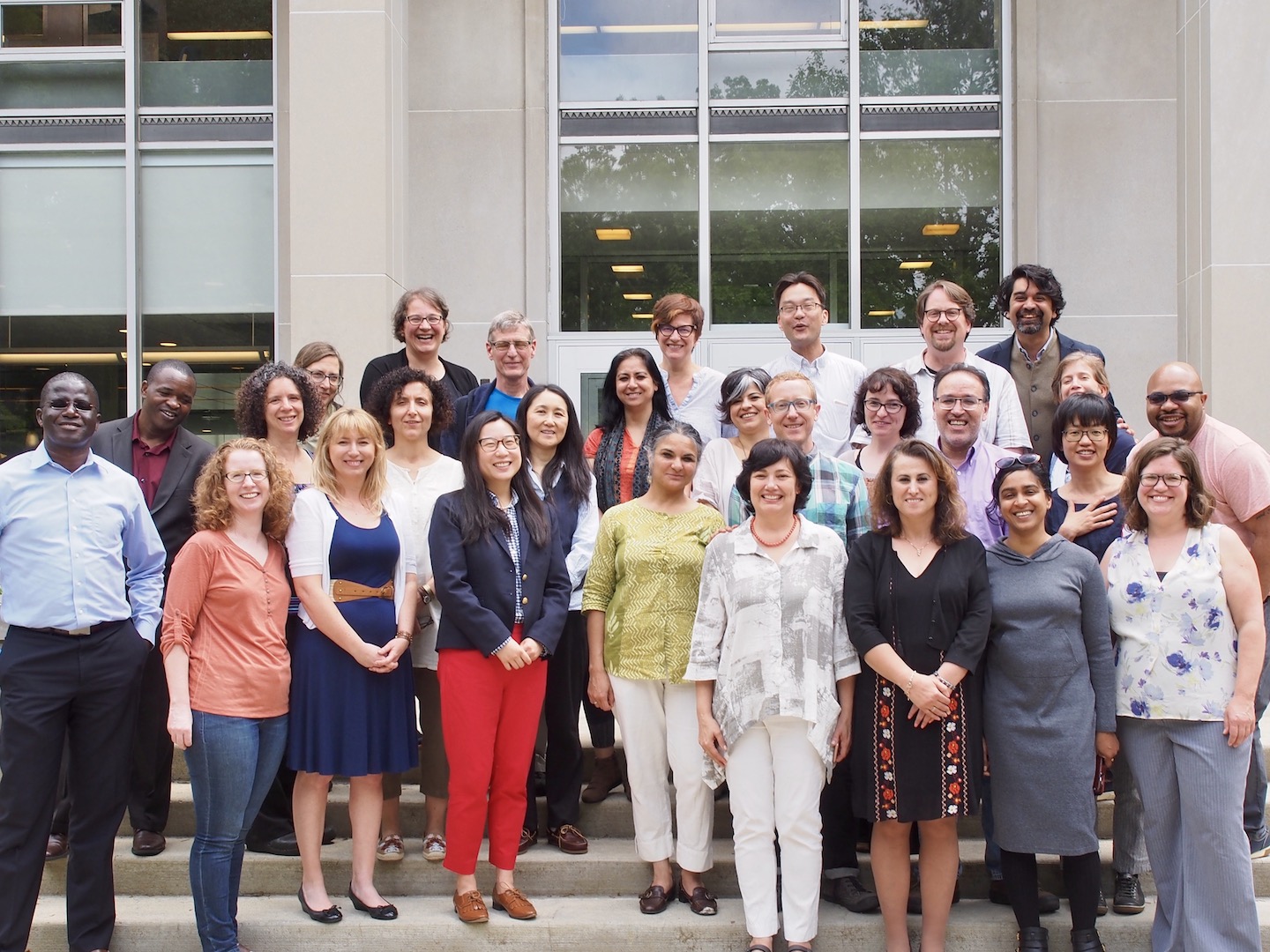
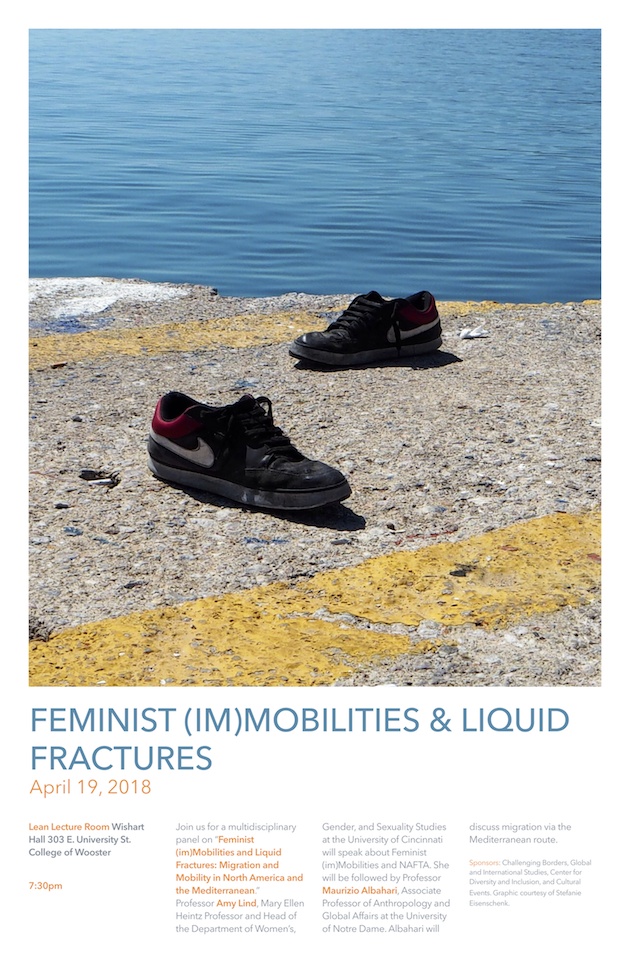 Continuing its commitment to “Challenging Borders” the College of Wooster will host a panel discussion on contemporary issues related to migration and the dynamic relationship between the mobility of people, ideas, and commodities. In this panel, we will focus on two geographies, North America and the Mediterranean. Our central question is how policies, histories, ideas, imaginations, and institutional structures have suppressed the movement of some and facilitated the movement of others. The panel discussion will be held in Wishart Hall, Lean Lecture Room at 7:30pm on April 19th. The event was free and open to the public and was also live-streamed. (
Continuing its commitment to “Challenging Borders” the College of Wooster will host a panel discussion on contemporary issues related to migration and the dynamic relationship between the mobility of people, ideas, and commodities. In this panel, we will focus on two geographies, North America and the Mediterranean. Our central question is how policies, histories, ideas, imaginations, and institutional structures have suppressed the movement of some and facilitated the movement of others. The panel discussion will be held in Wishart Hall, Lean Lecture Room at 7:30pm on April 19th. The event was free and open to the public and was also live-streamed. (
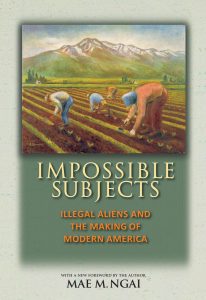 Europeans, and then looks at how these immigration restrictions created new categories of racial difference. Later chapters look at how immigration officials applied these policies to colonial subjects like Filipinos, Mexican agricultural workers not covered by the quota system, and Asians ineligible for citizenship. Pedagogically, the book provided an invaluable historical overview of the construction of race and national identity, while at the same time reinforcing close reading and analysis of secondary sources.
Europeans, and then looks at how these immigration restrictions created new categories of racial difference. Later chapters look at how immigration officials applied these policies to colonial subjects like Filipinos, Mexican agricultural workers not covered by the quota system, and Asians ineligible for citizenship. Pedagogically, the book provided an invaluable historical overview of the construction of race and national identity, while at the same time reinforcing close reading and analysis of secondary sources.